Free download: Top 10 Natural & Easy Remedies for Joint Pain from Home. Learn these helpful remedies.
Estimated Reading Time: 6 minutes read
How to release a pinched nerve in the shoulder: It doesn’t take long to alleviate the radiating numbness that often ensues with pinched nerves and neck/shoulder pain. In fact, these 5 simple movements may help tremendously!
The radiating pain streaming down our hand is a strong indicator that something is wrong. And whether or not it is accompanied by pain in our shoulder blades or numbness across our arm, it’s most likely a sign of a pinched nerve in our shoulder.
We can try to rest or ignore the signs, but with every wrong turn of our neck making the pain worse, we can’t go on like this for long.
Table of Contents
Why Does Shoulder Impingement Happen?
A pinched nerve happens when the surrounding tissues exert too much pressure (compression) on a nerve.
In certain cases, this tissue may be bone or cartilage, as is the case for a herniated spinal disk compressing a nerve root. In other cases, the disorder may be caused by muscle or tendons.
Underlying Reasons You May Experience Pinched Nerves in Your Shoulder

 Poor Posture Leading to Muscle Imbalance
Poor Posture Leading to Muscle Imbalance
This is caused by the all-too-common forward head posture.
This poor posture begins with forward-rounding shoulders, causing an increased curve in the neck, trapping nerves in an uncomfortable position.
 Arthritis
Arthritis
Osteoarthritis is caused by the deterioration of joint cartilage. Rheumatoid arthritis occurs when the body’s own immune system attacks the joint.
Both diseases create wear and tear changes leading to cervical radiculopathy, commonly called a “pinched nerve” or impingement.
 Overuse Injuries
Overuse Injuries
Common, yet aggravating, injuries such as Rotator Cuff Tendinitis or Bursitis occur through repeated motions or chronic impact on a single joint.
The wear and tear on these joints leave them susceptible to nerve damage along the way.
To help mitigate the risk of going under the knife, try the following pinched nerve in shoulder treatment at home.
3-Minute Daily Routine to Release a Pinched Nerve in Your Shoulder
With little to no equipment, it is possible to help reduce nerve pain in just 3 minutes a day!
Below are some of the best exercises for shoulder impingement.
These stretches can be done together or throughout the day to ensure any potential numbness is kept at bay.
 Door Frame Stretch
Door Frame Stretch
While forward-rounding shoulders can become a precursor for shoulder impingement, by doing the opposite (i.e. opening the chest through stretches), we can improve our posture and reduce the effects of poor daily posture.
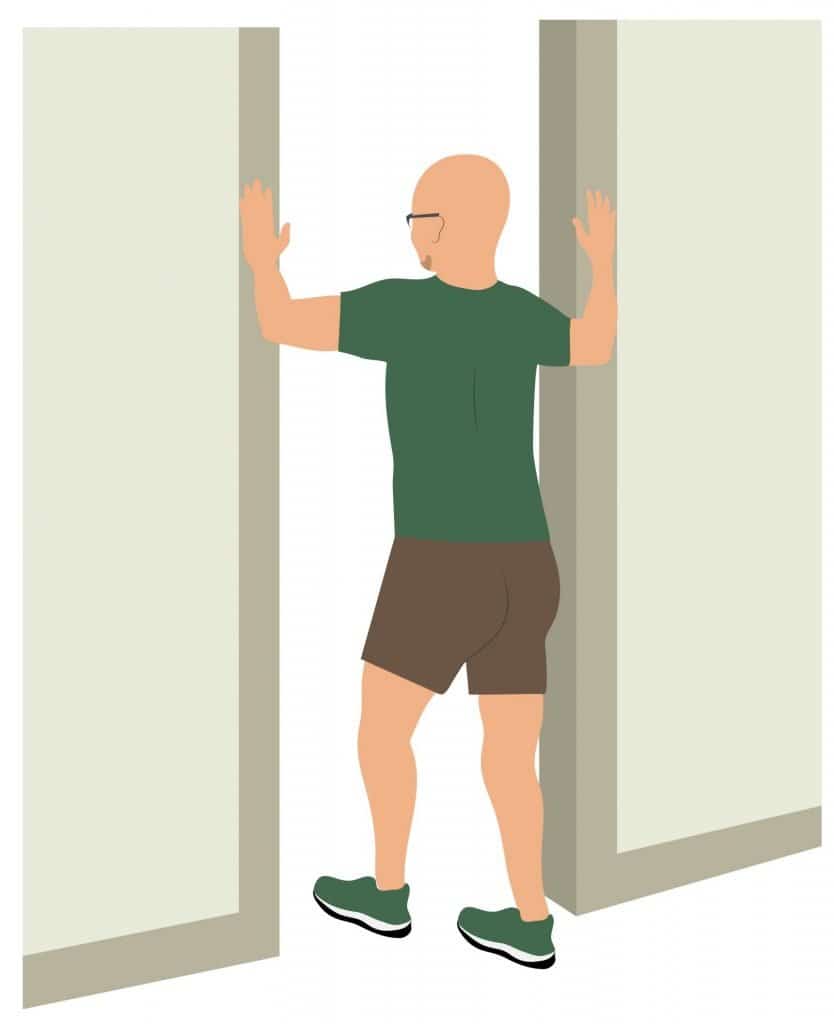
Stand in the center of an open doorway. Raise each arm to the side, bent at 90-degree angles, with palms pressed against the frame.
Slowly step forward with one foot while keeping an upright stance.
Hold the stretch for 30 seconds.
Repeat 3 times.

 Chair Stretch
Chair Stretch
Uncontrolled neck movements can often make nerve pain worse. However, when the movement is slowed down and properly executed, it can become a release for trapped nerves in and around our neck and shoulders.

Sit up straight in a chair with your head and neck in a neutral position. Hold the edge of your chair seat with your right hand.
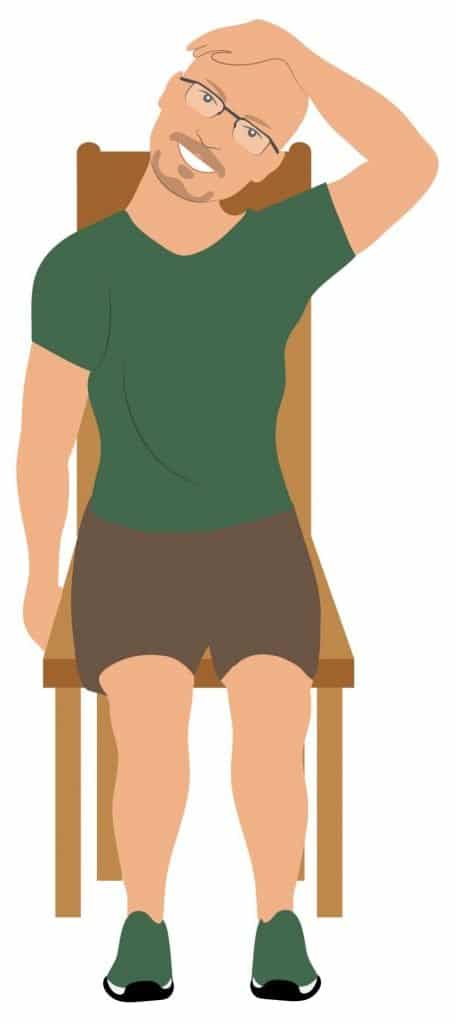
Tuck your chin in slightly and tilt your head to the left. Place your left hand gently on the right side of your head to deepen the stretch.
Hold for 30 to 60 seconds then return your head and neck to the neutral position.
Repeat this exercise 3 times total before switching sides.
One of the biggest challenges with improving your joint health is being consistent with your routines. That’s why, I recommend our Feel Good Body method for total joint rejuvenation.
We’ll send you a booklet and DVD in the mail so you can easily and conveniently follow along as I guide you through joint health routines for every body part. Just push play and follow along.
Ok, now on to more exercises in this routine.

 Shoulder Rotations
Shoulder Rotations
Just as resetting our posture can help mitigate the risk of producing nerve pain, slowly moving the shoulder through fuller ranges of motion can ensure nerves can flow properly and through the rest of the body.

Sit with your back against a chair, arms hanging loosely by your sides to start. Move your shoulders in a circle-like fashion, bringing them upward, backward, down, and then forward to the starting position.
Repeat 3 times and then reverse the direction 3 times.

 Bent Over Shoulder Circles
Bent Over Shoulder Circles
This exercise is an even more passive way to release trapped nerves while allowing for a more complete range of motion.
By using gravity as well as the rest of the body to initiate the movement, shoulder circles are an effective tool for reducing nerve pain.
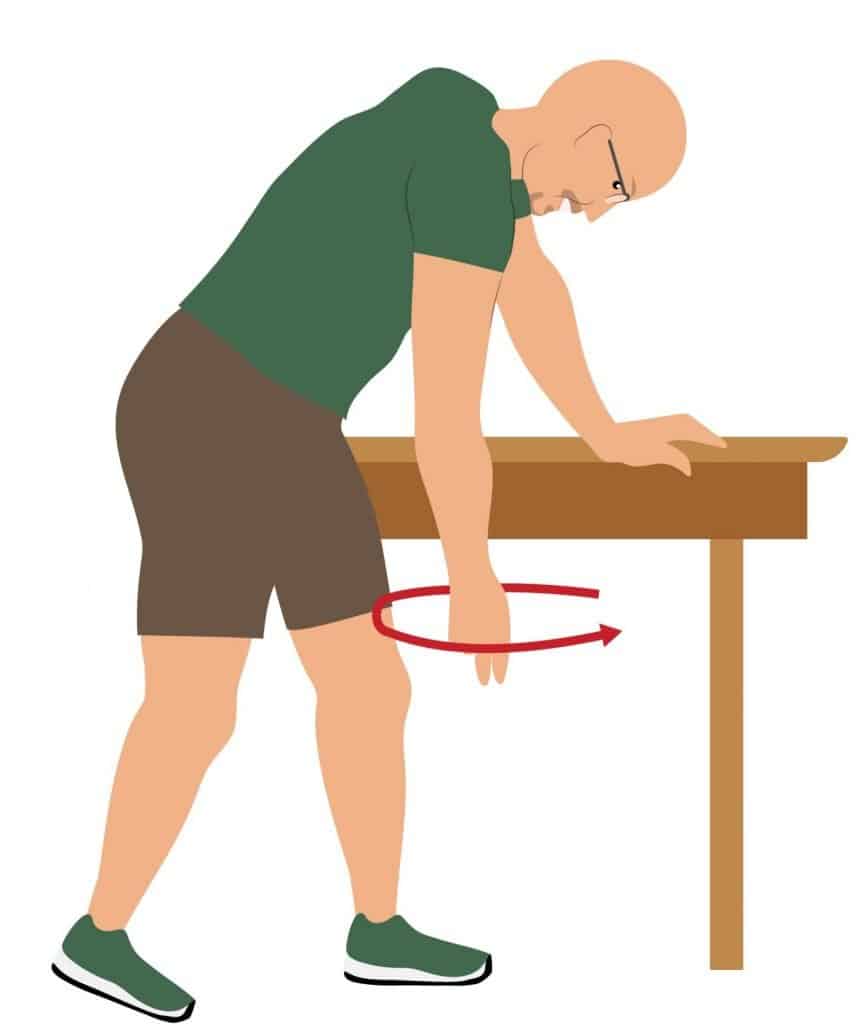
Stand beside a table, resting the unaffected arm on it. With feet slightly wider than shoulder-width apart, bend at the hips to let your affected arm hang down toward the floor.
Slightly shift your weight side to side, letting your arm follow. Shift your weight forward and backward, your arm following once again.
Once you feel comfortable with these movements, move your body so that your arm swings in a small circle. Continue for 30 seconds.
Each day, increase the time until you can do 3 to 5 minutes.

 Internal/External Shoulder Rotations
Internal/External Shoulder Rotations
The front of the shoulder joint can cause many issues if not properly trained. Many times, impingement occurs towards the front of the shoulder.
This exercise opens up the front of the shoulder joint to release any trapped nerves while improving posture.
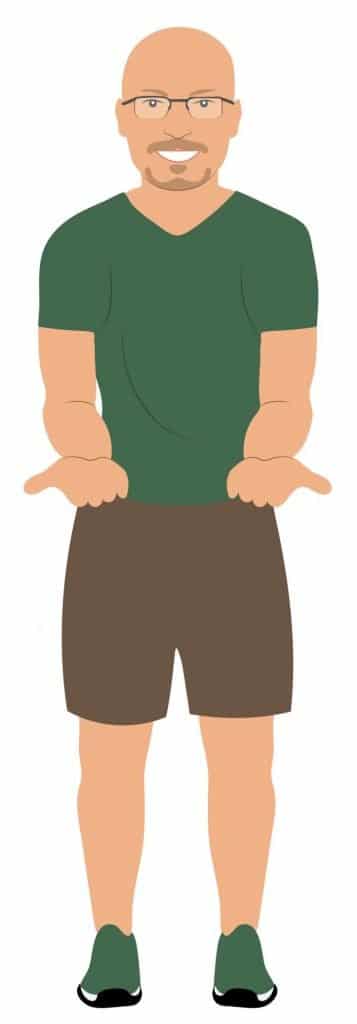
Bend your elbows to 90 degrees, so that your palms are face up in front of you.
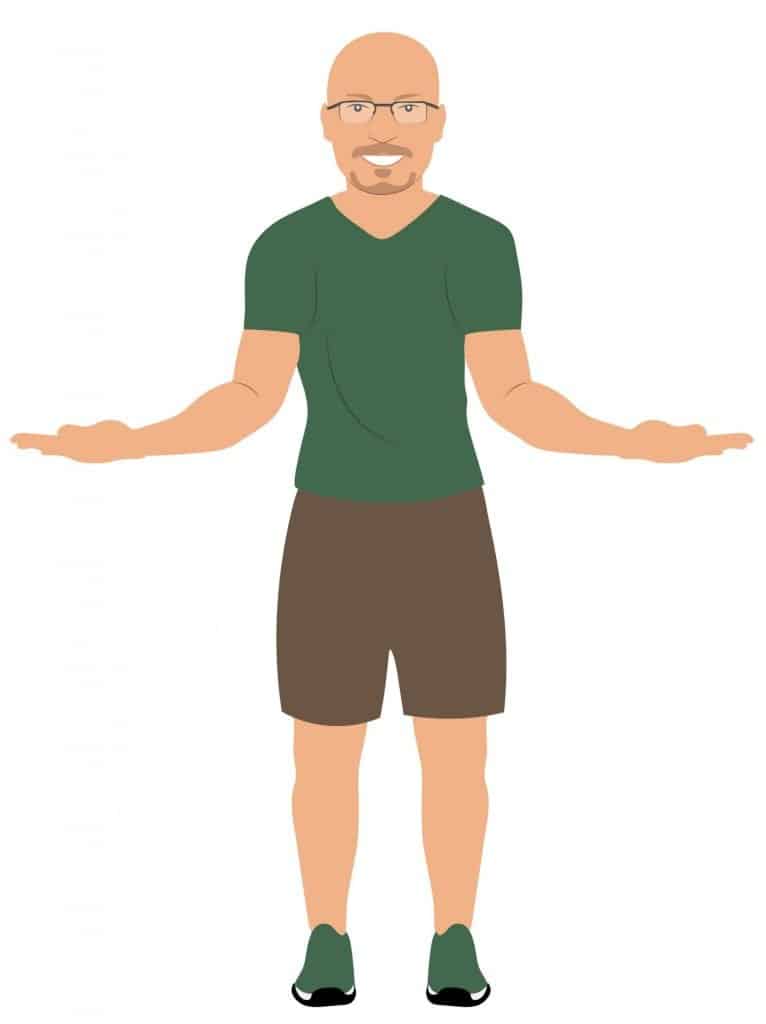
Keep your elbows in contact with the sides of your body, while rotating your arms outwards then inwards again. Allow the shoulder to move as much as you can without reproducing any pain.
Hold that position for 3 seconds and then return to neutral.
Repeat 3 times.
What Can I Do to Prevent Symptoms from Returning?
While the above exercises, when incorporated into your everyday routine, may help to reduce pain and even absolve it altogether… there’s more needed to fix a pinched nerve.
To prevent symptoms from returning, avoid sitting or standing with slumped shoulders.
As well, take care to break from repetitive activities that could aggravate the impingement.
Other options include:
- Lift and Carry Items Close to Your Body
- Avoid Carrying a Heavy Purse or Backpack on a Single Shoulder
In combination, these activities should provide relief from the radiating numbness or pain throughout your arms.
At the end of the day, improving your strength and mobility throughout your body is very important for preventing pinched nerves from occurring in the first place. Continue to work every day to increase the health of your joints.
Coach Todd




 Poor Posture Leading to Muscle Imbalance
Poor Posture Leading to Muscle Imbalance
 Arthritis
Arthritis Overuse Injuries
Overuse Injuries Bent Over Shoulder Circles
Bent Over Shoulder Circles
 Internal/External Shoulder Rotations
Internal/External Shoulder Rotations







7 Responses
I have had my left upper lung removed due to lung cancer so I have lots of nerves flying around so am told they will settle but year on keep getting trapped nerve starts in my shoulder and moves down my left upper arm , I no it's not like carpel tunnel as I have had a finger removed on each hand to help them open but these exercises especially the one were gravity grabs arm is fantastic thank you so much hopefully it will be successful and help the pain🙏👍
Thanks for these instructions, and the illustrations are really helpful.
You're welcome, Suzanne!
A medication I must take causes the nerves in my shoulders (most specifically the Carpal Tunnel Nerve) to be irritated. I believe the exercises you have given me will help to at least some degree.
That's fantastic, Laura! I am glad that the exercises have been helpful in decreasing your pain.
How do I get rid of swollen knee, pain in my knee and also it is out of alignment.
Hi Jacquelyn! I recommend you take a look at this article: https://www.feelgoodlife.com/knee-exercises-from-bed/. Easy exercises to start with that will help with more knee alignment that is probably causing your knee swelling.